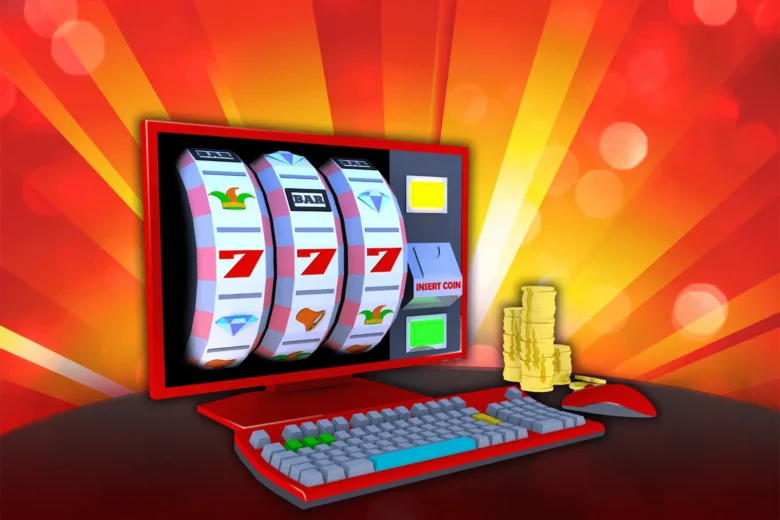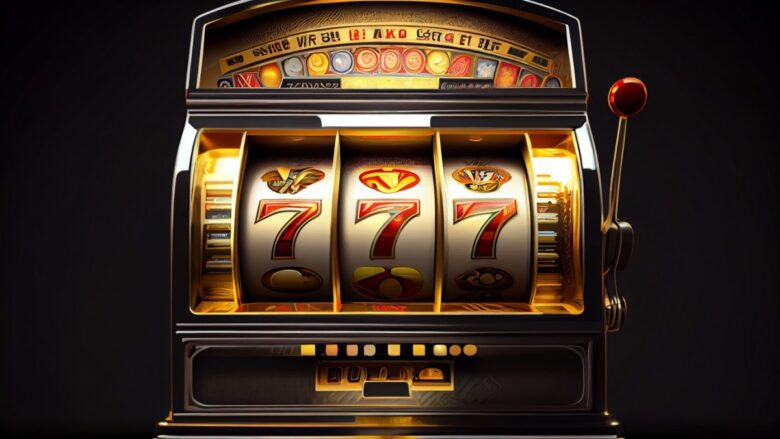In the ever-evolving world of online gaming, one aspect that has gained tremendous significance is the user interface (UI) and user experience (UX) design. This is particularly true in the realm of progressive slot games, where the thrill of chasing jackpots is met with the need for seamless and enjoyable gameplay. Responsive design plays a pivotal role in enhancing the overall experience of players engaging in progressive slot play. In this article, we delve into the significance of responsive design in the context of progressive slots, exploring how it can elevate the UI/UX and contribute to an engaging and immersive gaming environment.
Understanding Progressive Slots and their Allure

Before we dive into the world of responsive design, it’s crucial to grasp the essence of progressive slot games and what makes them so captivating for players. Unlike traditional slot gacor machines with fixed jackpots, progressive slots boast dynamic, ever-growing jackpots that accumulate as players across various platforms contribute to the pot. This creates an enticing atmosphere where players can potentially win life-changing sums of money.
The allure of progressive slots lies in the unpredictability and the possibility of hitting a massive jackpot with a single spin. However, the thrill of the game can quickly diminish if players encounter hurdles in navigating the interface or if the user experience is subpar. This is where responsive design steps in to ensure a seamless and enjoyable gaming journey.
The Crucial Role of Responsive Design in Progressive Slots
1. Cross-Platform Compatibility
Responsive design is all about ensuring that the gaming experience is consistent across different devices and screen sizes. Progressive slot players can engage in their favorite games on a variety of platforms, including desktops, laptops, tablets, and smartphones. Cross-platform compatibility is not just a luxury but a necessity in the contemporary gaming landscape.
Points to consider:
- Adaptability: Responsive design ensures that the game adapts to different screen sizes and resolutions without compromising on visual appeal or functionality.
- Consistent Experience: Players should have a consistent experience, whether they are spinning the reels on a desktop at home or using a mobile device on the go.
2. Intuitive Navigation
Navigating through a progressive slot game should be as intuitive as pulling the lever on a physical slot machine. Responsive design plays a crucial role in simplifying navigation, allowing players to focus on the excitement of the game rather than grappling with a convoluted interface.
Points to consider:
- User-Friendly Layout: The layout should be designed with the user in mind, placing essential elements such as spin buttons and paytable information within easy reach.
- Intelligent Menus: Responsive menus that adapt to different screen sizes ensure that players can access game features effortlessly.
3. Visual Appeal and Immersive Graphics
The visual aspect of progressive slots contributes significantly to the overall gaming experience. Responsive design is instrumental in preserving the visual appeal and ensuring that the graphics remain captivating, regardless of the device being used.
Points to consider:
- Graphics Optimization: Images and animations should be optimized for quick loading without compromising on quality.
- Consistent Aesthetics: The aesthetics of the game, including themes and color schemes, should remain consistent across devices.
4. Speed and Performance
The speed at which a progressive slot game loads and operates can make or break the player’s experience. Responsive design plays a crucial role in optimizing speed and performance, ensuring that players can dive into the action without unnecessary delays.
Points to consider:
- Quick Loading Times: Efficient coding and design practices should result in fast loading times, preventing players from experiencing frustrating delays.
- Smooth Animations: Responsive design should accommodate smooth and seamless animations, enhancing the overall gaming flow.
Challenges in Implementing Responsive Design for Progressive Slots

While the benefits of responsive design are evident, implementing it in the context of progressive slots comes with its own set of challenges. Designers and developers must navigate these hurdles to create a gaming experience that truly resonates with players.
1. Balancing Complexity and Simplicity
Progressive slots often come with intricate features, including multiple paylines, bonus rounds, and interactive elements. Balancing the complexity of these features with a simple and user-friendly interface is a delicate dance that requires careful consideration.
Points to consider:
- Feature Prioritization: Identify key features that enhance gameplay and prioritize them in the design.
- Progressive Disclosure: Introduce complex features gradually, allowing players to familiarize themselves with the game over time.
2. Device Limitations and Capabilities
Different devices have varying capabilities and limitations, and designing for a diverse range of platforms requires a nuanced approach. From the processing power of a desktop computer to the smaller screen real estate of a smartphone, responsive design must cater to these differences.
Points to consider:
- Performance Optimization: Tailor graphics and animations based on the processing power of the device.
- Touchscreen Considerations: Design with touchscreen functionality in mind, especially for mobile devices.
3. Consistency Across Variants
Progressive slot games often have multiple variants, each with its own unique features and themes. Maintaining consistency across these variants while still allowing for individuality is a challenge that requires meticulous planning.
Points to consider:
- Unified Design Language: Establish a cohesive design language that runs through all variants.
- Customization Options: Allow players to customize certain aspects while ensuring the core design remains consistent.
The Future of Responsive Design in Progressive Slots

As technology continues to advance and player expectations evolve, the future of responsive design in progressive slots holds exciting possibilities. The following trends and developments are likely to shape the landscape of UI/UX optimization in progressive slot gaming.
1. Augmented Reality (AR) Integration
The integration of augmented reality into online gaming is a frontier that holds immense potential. Responsive design will play a pivotal role in ensuring a seamless transition between traditional and AR-enhanced gameplay experiences.
Points to consider:
- Immersive Environments: Use AR to create immersive virtual environments that enhance the overall gaming experience.
- Adaptive Interfaces: Responsive design must adapt to the unique requirements of AR interfaces, considering factors such as gesture controls and spatial awareness.
2. Personalized Gaming Experiences
As players seek more personalized experiences, responsive design will be instrumental in tailoring the gaming environment to individual preferences. This includes everything from customizable interfaces to adaptive difficulty levels.
Points to consider:
- Player Profiles: Create profiles that store player preferences and adapt the game accordingly.
- Adaptive Difficulty: Use responsive design to dynamically adjust the difficulty level based on the player’s skill and engagement.
3. Integration with Wearable Devices
The rise of wearable devices presents new opportunities for responsive design in progressive slots. From smartwatches to AR glasses, these devices offer unique interfaces that can enhance the gaming experience.
Points to consider:
- Microinteractions: Leverage microinteractions for quick and convenient gameplay on wearable devices.
- Real-Time Updates: Ensure that progressive slot jackpots and updates are seamlessly delivered to wearable devices in real time.
Conclusion

In the fast-paced world of online gaming, where the pursuit of jackpots drives player engagement, responsive design stands as a cornerstone for elevating the UI/UX of progressive slot games. From cross-platform compatibility to intuitive navigation and visual appeal, every facet of responsive design contributes to a gaming experience that is not only enjoyable but also immersive.
As the gaming landscape continues to evolve, designers and developers must navigate challenges and embrace emerging technologies to deliver experiences that captivate and retain players. The future of responsive design in progressive slots holds exciting prospects, promising even more personalized, immersive, and seamless gameplay for enthusiasts chasing the thrill of the next big jackpot. As players embark on their digital quest for fortune, responsive design ensures that the journey is as exhilarating as the destination itself.

